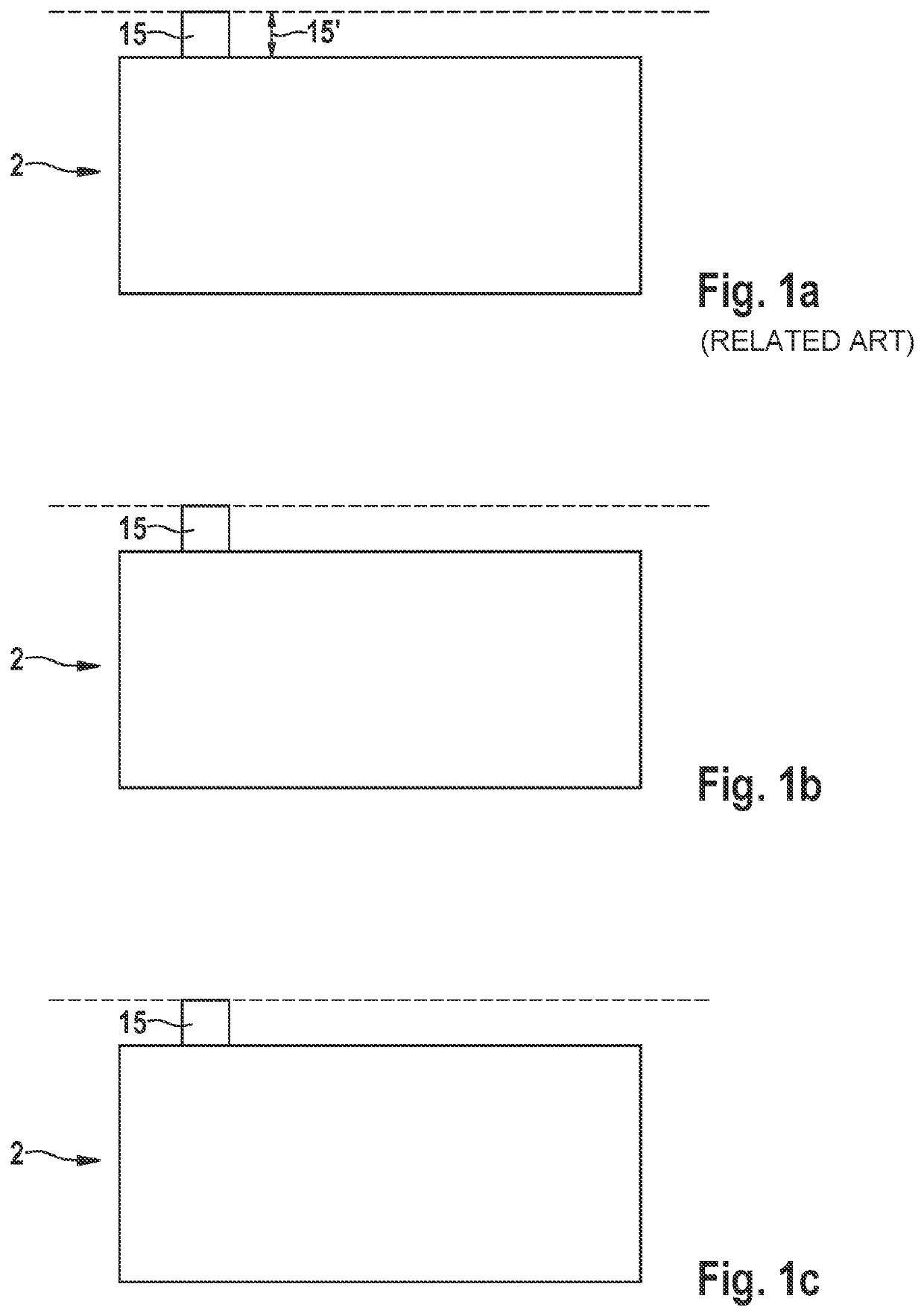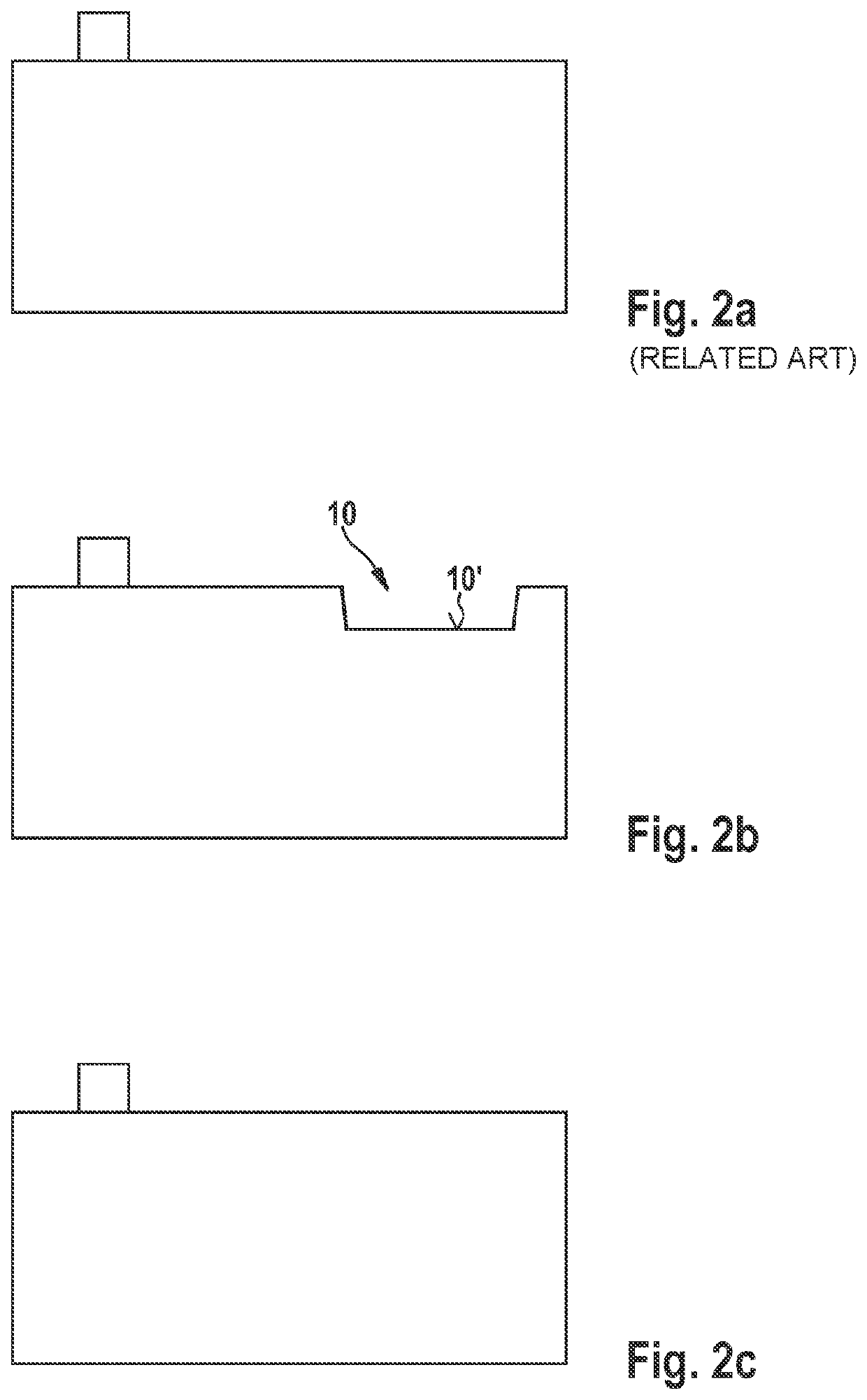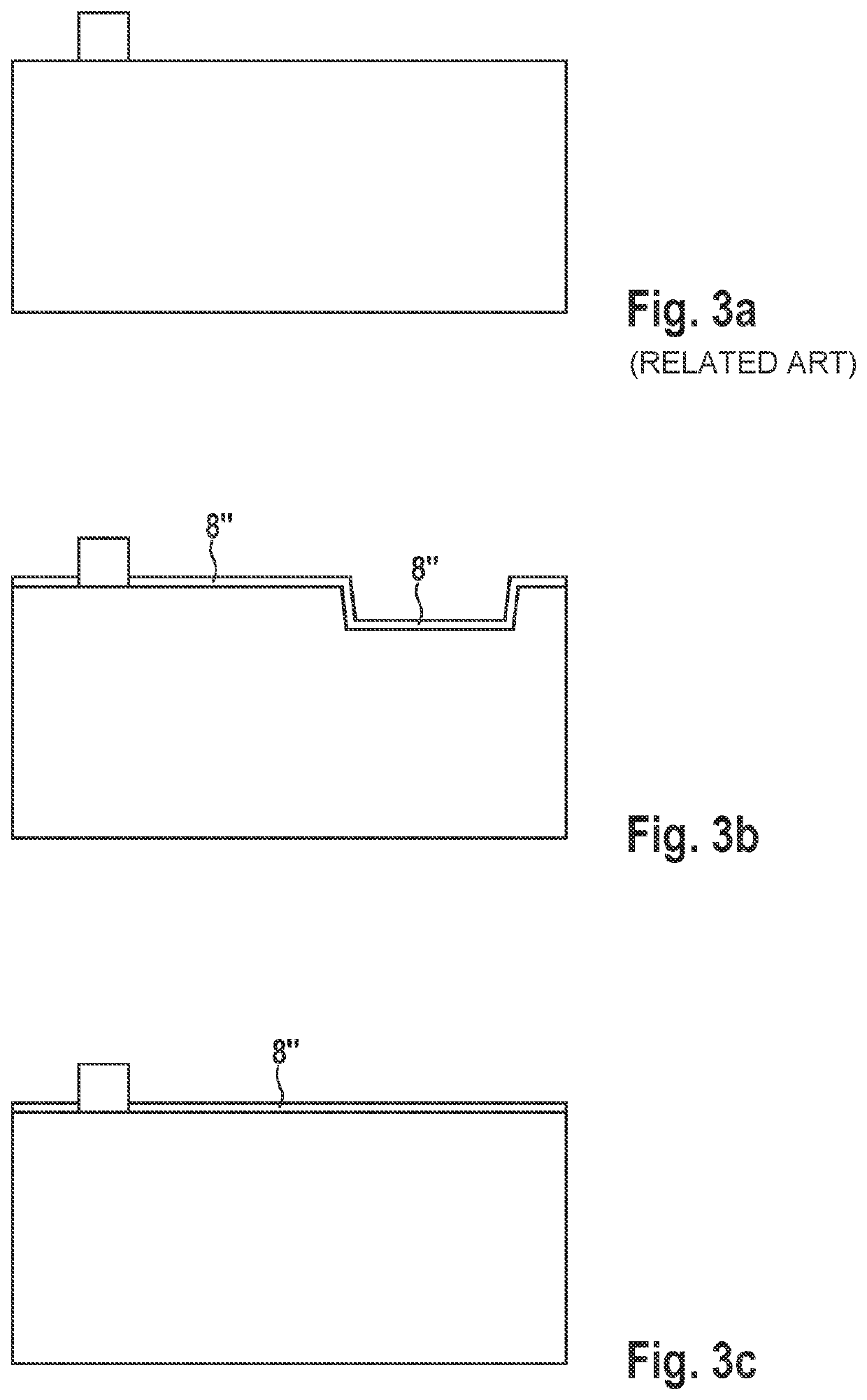Method for producing a microelectromechanical sensor and microelectromechanical sensor
a microelectromechanical and sensor technology, applied in the direction of fluid speed measurement, instruments, coatings, etc., can solve the problems of limiting the distance between the upper edge of the movable structure and the stop surface, damage or even destruction of the sensor, and the breakage of the fp bridge, so as to avoid the breakage of the functional fp bridge
- Summary
- Abstract
- Description
- Claims
- Application Information
AI Technical Summary
Benefits of technology
Problems solved by technology
Method used
Image
Examples
Embodiment Construction
[0026]In the figures, FIGS. 1c, 2c, 3c, 4c, 5c, 6c, 7c, 8c, and 9c correspond to various stages in the production process of a cap wafer 2, or of the sensor 1 formed thereby, according to a specific embodiment of the method according to the present invention. FIGS. 1b, 2b, 3b, 4b, 5b, 6b, 7b, 8b, and 9b show a variant of the method according to the present invention in which, in addition to stop structure 7, a capping electrode 17 is formed as part of cap wafer 2. FIGS. 1a, 2a, 3a, 4a, 5a, 6a, 7a, 8a, and 9a show a production method according to the related art. The respectively corresponding stages of the various production processes are shown one over the other (see for example the sequence of FIGS. 1a, 1b, 1c, which show the respective first substep at the beginning of the processing of the cap wafer), so that the differences, in particular missing or additional substeps, can easily be worked out. In the various Figures, identical or equivalent parts are always provided with the ...
PUM
| Property | Measurement | Unit |
|---|---|---|
| thickness | aaaaa | aaaaa |
| thickness | aaaaa | aaaaa |
| height | aaaaa | aaaaa |
Abstract
Description
Claims
Application Information
 Login to View More
Login to View More - R&D
- Intellectual Property
- Life Sciences
- Materials
- Tech Scout
- Unparalleled Data Quality
- Higher Quality Content
- 60% Fewer Hallucinations
Browse by: Latest US Patents, China's latest patents, Technical Efficacy Thesaurus, Application Domain, Technology Topic, Popular Technical Reports.
© 2025 PatSnap. All rights reserved.Legal|Privacy policy|Modern Slavery Act Transparency Statement|Sitemap|About US| Contact US: help@patsnap.com



